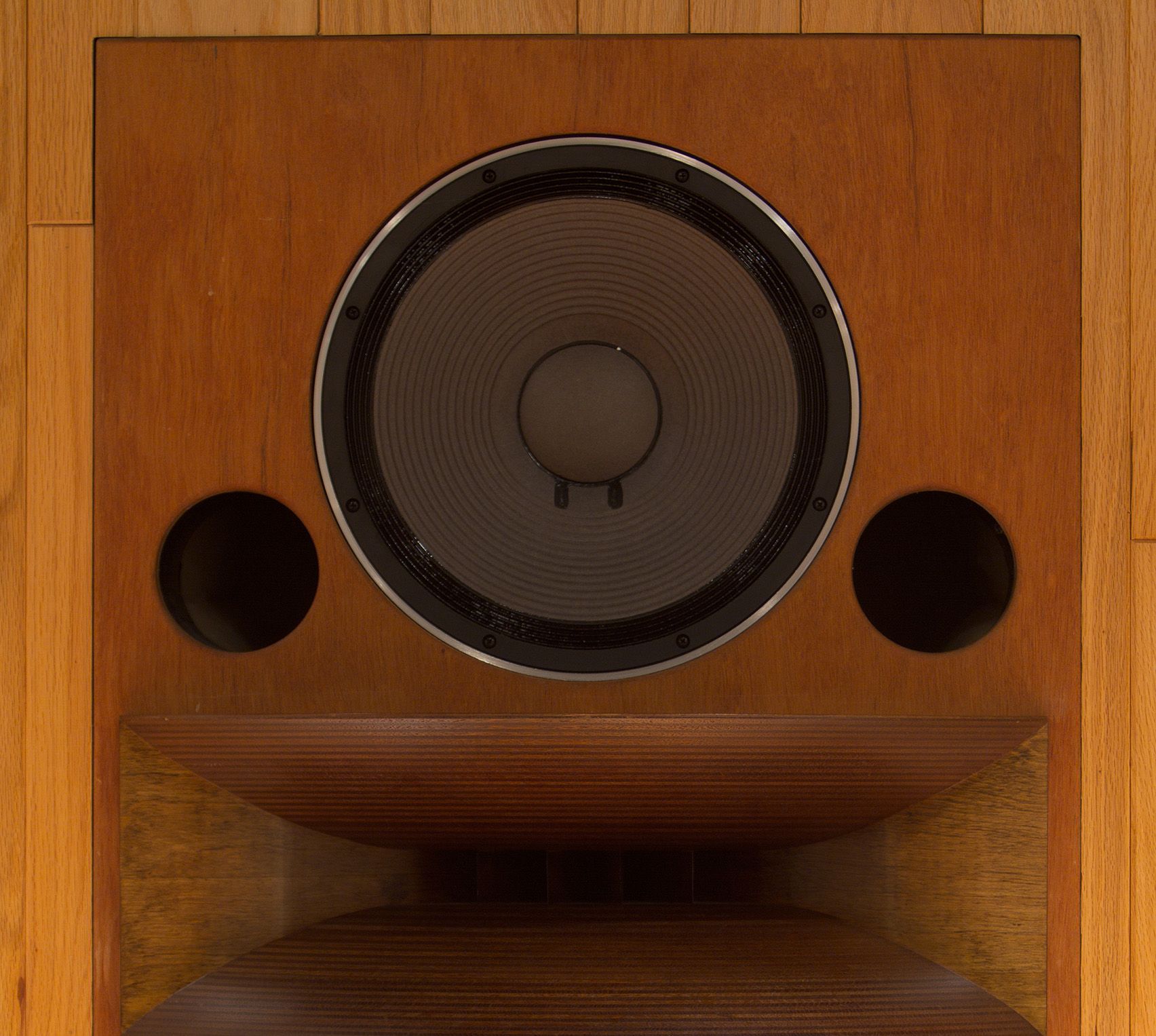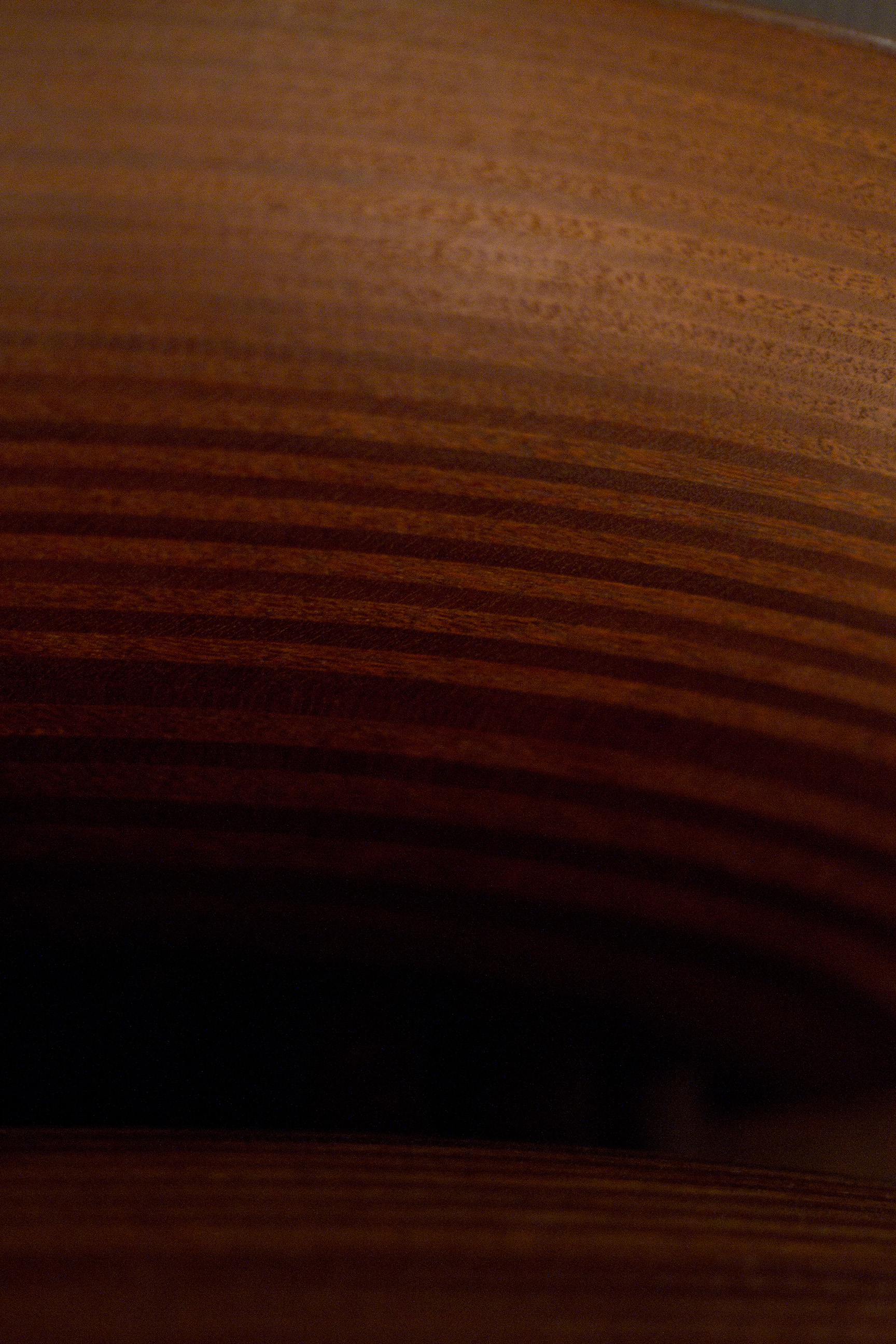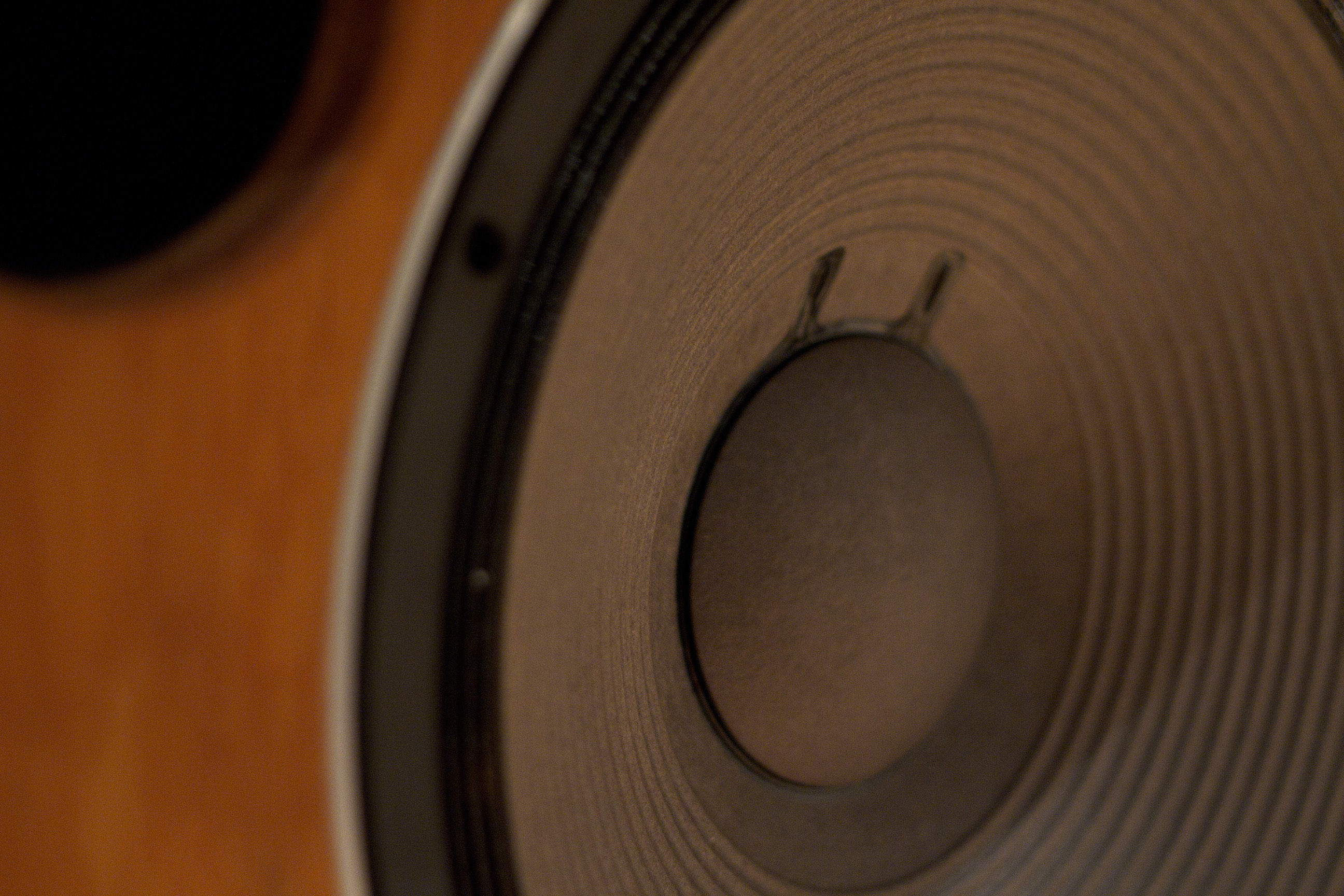Studio Architecture and Design
by Tom Hidley
The rooms designed by Tom Hidley at Masterfonics were built from the ground up with proper acoustic performance being the priority. With a structural shell larger than the finished room size to accommodate acoustic treatment, near-anechoic performance is maintained at very low frequencies. Hidley uses acoustically absorptive material surrounding wooden baffles, suspended vertically and horizontally at precise angles, and spaced along the walls and ceiling.
Flanking absorber panels lie behind the angled panels, parallel to the inner ‘diaphragmatic’ walls, separated from the outer concrete shell by a small void space. These components form complex absorbers, diffusers, and waveguides that work together to steer and trap audio wavefronts emerging from the monitor speakers.
Although the science of the non-environment room is now fairly well understood, Hidley’s experience is still required to optimize a specific room’s design. His innovation is to design a room that is anechoic as far as the monitors are concerned, but that provides a natural-sounding environment for the users.
Hidley has standardized the use of soffit-mounted monitors to avoid problems such as cabinet-edge diffraction, and uses massive monitor walls built from poured concrete, incorporating concrete soffits for the monitor cabinets. This ensures that all of the acoustic energy from the speaker is sent into the room, while simultaneously extending the speakers’ baffle area to significantly improve the low-frequency efficiency and linearity of the monitoring system. The concrete monitor wall, clad in wood paneling, is reflective to sound sources in the control room, as is the hardwood flooring.
“Non-Environment”
From the perspective of anyone working in the room, the acoustics are similar to being outdoors, since the strongest reflections come mainly from the ground, with some from the monitor wall and equipment. The presence (and predominantly vertical orientation) of these reflections prevents the room from feeling unpleasantly ‘dead’, and actually sounds reassuringly natural. However, the monitors can’t ‘see’ the monitor wall at all since they are part of it, and as the control room’s rear and side walls and ceiling are completely absorbent, the monitors are in effect working into a room, which approximates an anechoic chamber. Sound from the monitors spreads through the room in a natural way but generates no reflections at all — hence the ‘Non-Environment’ moniker.
















